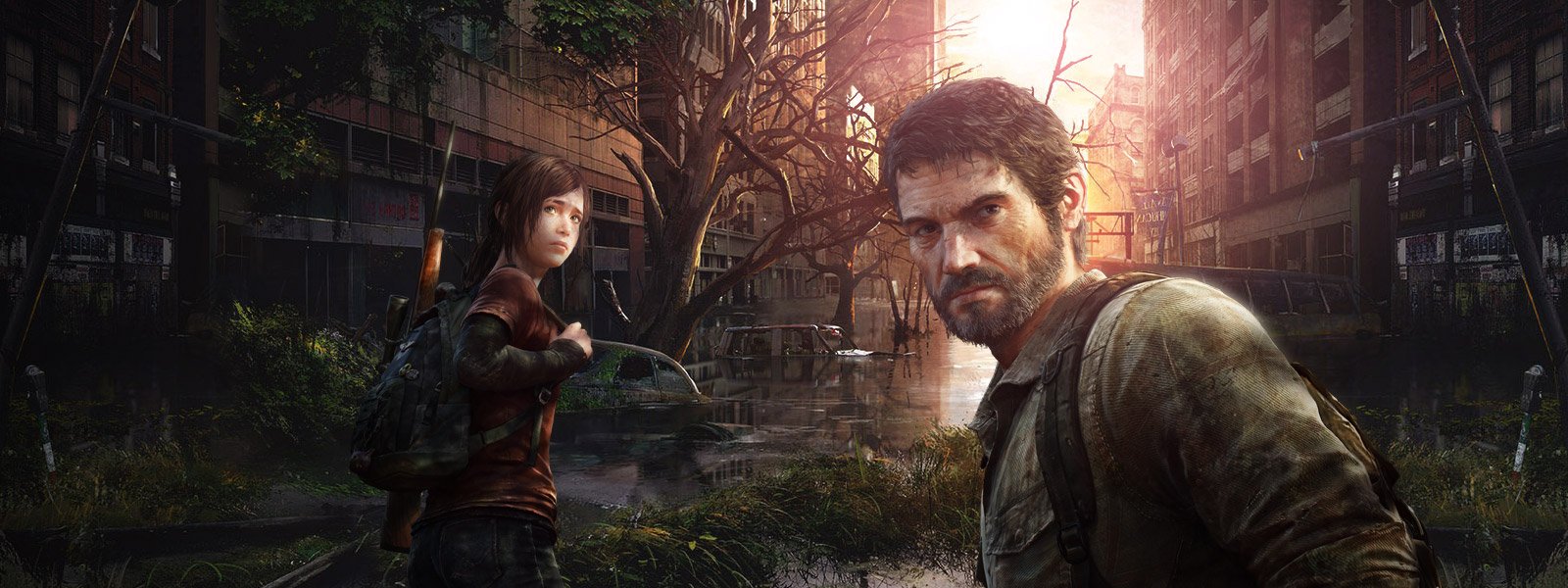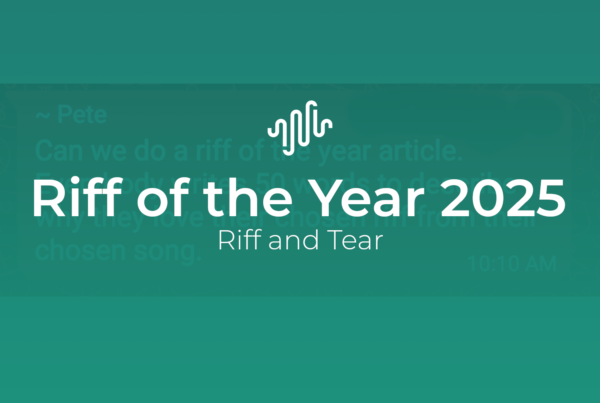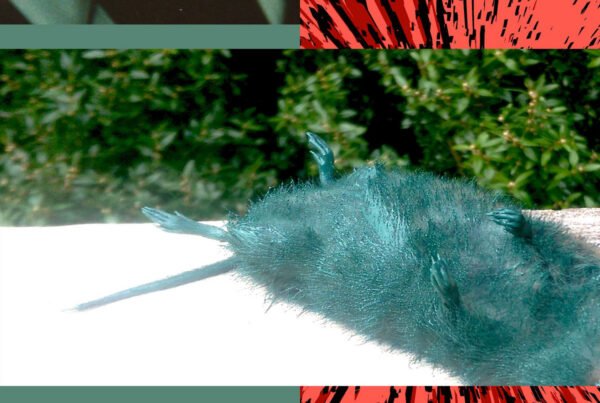Hello and welcome to another edition of Sound Test, where we talk about the music behind some of our favourite video games. Today, I will be presenting the music of the incredible The Last of Us, which features music by Gustavo Santaolalla (who had some help from Alan Umstead). The Last of Us was released on the Playstation 3 on June 14, 2013 by Naughty Dog; the project was helmed by Neil Druckmann and Bruce Straley.
The Last of Us is a bleak exploration of a possible future for humanity, having civilization crumble to a shell of itself because of a very real natural phenomenon. In the game’s setting, cordyceps have plagued survivors and non-survivors by essentially turning them into zombie-like husks through fungal brain infestations. The horror of this becomes much more frightening due to this being a real thing that happens on our planet – albeit only with ants.
‘Just one peaceful night; a clean conscience…All gone…‘
The Last of Us takes the age-old and often bland trope of a post-apocalyptic zombie story and transforms it into something really special. By focusing on the struggles and survival of a few individuals, things become less of an action-based shoot’em up and more of an introspective look on what happens to people when their world dies. Obviously, this means that everything present is dark, bleak, horrific, and depressing, which Santaolalla is able to fully interpret and recreate through his music.
Contained within both the story and the music of The Last of Us are a lot of psychological aspects of the human mind. Santaolalla and the other music producers really felt all of this in the story, and were thus able to compliment the anhedonia, the trauma-bonding, the enmeshment, and many other things which Joel and Ellie face throughout their journey. Songs like the unreleased (read: it’s only found in the game) track from Bill’s town or “The Vanishing Grace” suite, even “The Path”: they all demonstrate the complexities found within the human mind, and what we can do when pushed to our limits.
The Last of Us is not just a simple game of moving to the right side of the screen and rescuing a princess; there are very human elements found within it. This is why Santaolalla was willing to come on board and write the soundtrack to this game: because of how complex it was, and because he knew the writers were serious about their creation. But first, let’s step back, turn on the game, and begin our adventure into the ruined world.
‘After all we’ve been through. Everything that I’ve done. It can’t be for nothing.‘
The first thing that stuck out to me in The Last of Us was the music, right from the game’s start-up menu. To me, this was important, because the video games that stick with me throughout the years are those that have amazing and memorable soundtracks. The Last of Us delivers on that big time, mainly because of what I mentioned above. The music is woven directly into the fabric of the gameplay and cut scenes, so seamlessly in fact that neither would be the same without each other. Santaolalla manages to place beautiful melodies in the parts that you have control over that at first you may not even notice, just because they fit what’s happening so well.
Silence is just as important a factor here. Whether it’s a stressful moment of sneaking around enemies or a quiet walk through the forest: silence plays a key role. It emphasizes the loneliness found in the world of The Last of Us, and also makes tense moments stand out all the more. This only adds to the effect of when music is actually inserted into whatever is happening. At one moment there will be nothing, and suddenly a quiet guitar begins to swell and increase in intensity until a melancholic melody rises up, much like the tears we get while playing this. Sorry, just trying to stretch my dramatic writing chops.
But we’re not here to talk about silence, we’re here for the emotionally crippling pieces of music. Throughout the game we survive trauma after trauma, only to somehow carry onto the next day. As we continue on the journey, the relationship between Joel and Ellie grows deeper. This means that the threats become that much more intense, because not only are you fighting for your own safety, your fighting for Ellie’s, too. “By Any Means” – the title says it all, completely mirroring Joel’s outlook on survival. The tribal drumming reflects how he goes to his primal form, removing all humanity to eliminate the enemies in his path. The intensity of “By Any Means” is a depiction of the barbarism of the world and how much is on the line. If Joel makes even one mistake, then everything he’s fought so hard for is gone.
‘I struggled for a long time with surviving. And no matter what, you keep finding something to fight for.‘
Joel and Ellie live in a world where their morals are challenged every day just to stay alive. The amount of damage this can do on one’s psyche is immense, and thus they become closer to each other and rely on each other more and more. Through trauma and the need to survive they become a more finely honed machine, with the shared goal of getting through the day. There are quiet moments of contemplation when some of their bottled-up thoughts are brought forward for discussions. In these scenes we usually find Ellie questioning Joel about the days before the end, or asking questions about his daughter. These bring up a well of nostalgia and sad feelings from the past. In turn, that puts a lot of pressure on the composer to get the music just right and to convey the right emotion.
In a lot of those instances there is silence to let the story and characters stand on their own. But the quiet moments of reflection do get rounded out with sombre pieces of music. One of the more emotional scenes, “I’m Not Her”, sees Joel and Ellie arguing about what their relationship is. Near the end of the scene there is a quiet swell of sound to emphasize the turmoil which is building up, where there had been no music up until this point. Coming in softly over the swell is a guitar lead playing a melody similar to the main theme, “The Last of Us”. There is also a deep and brooding cello-like instrument playing behind the guitar. It all adds up to one hell of an emotional scene, and one of the most stand-out moments of the game.
The simple act of getting food or talking to people becomes an extremely difficult task when the amount danger outweighs the joy. Before the game even begins, Ellie’s friendship with Riley ends, as most things do in this world. Obviously this gives Ellie some traumatic issues, which leads her to start trusting people less. The act of creating new friendships is something that doesn’t come easy for anyone anymore. When she meets Joel, the first thing she tries to do is kill him. Joel isn’t exactly the friendliest of dudes either, so his need for new acquaintances isn’t a top priority for him.
‘Let’s wait it out, you know, we can be all poetic and just lose our minds together.‘
Left Behind shows us Ellie hanging out with Riley, her best friend, before the tragedies for her begin. In the Left Behind tracks, we can hear sparks of happiness intertwined with what we all know is inevitably coming. The final days before her friendship ends bring Ellie a playful joy, as her and Riley have fun in a world that should ultimately not allow it. The simple acoustic melodies echo through the empty halls of a long-forgotten mall; the two characters throw rocks into car windows for sport and laughs, as kids that age should. The wind blows through the windowless openings, adding a sense of forlorn sadness. All of this is conveyed through the finger strokes of Santaolalla in the tracks of the DLC.
‘Look…you can still do the right thing here.‘
The final track which plays over the first bits of the end credits is “The Path”. There are two variations of this song, but both play out similarly by using both major and minor chords. This is done in a way that meshes the two together to create an uplifting yet unsettling melody. For those who have completed The Last of Us, you will understand that the ending also plays out exactly like this. The upbeat strumming of the acoustic guitar mirrors the feeling of accomplishment as we have just bested the brutal world enclosed in the game. Nonetheless, minor and slightly dissonant notes ring out above the happiness and leave us feeling empty, questioning if we really did the right thing or not. There’s nothing short of brilliance found in the combination of the sounds in this song with the completion of the journey.
Gustavo Santaolalla is an extremely talented musician, but first and foremost he is able to perfectly grasp feelings and emotions. All of this can be seen during a live performance of some of the game’s songs. Through the use of all kinds of natural instruments, he creates something very akin to the world we see throughout our time within The Last of Us. The often tribal rhythms, mixed with the emotive stringed instruments, bring us back to the days before electronic-based instruments have become widely used. There’s something that strikes to the primal core of us all when the balance is right – the ronroco certainly lends a hand.
The Last of Us is not a simple or easy experience. This is a game that will bring you to your emotional end, and will make you fight on despite everything. It will give you something to care for and rip it right from under you. The world and story presented are familiar but also unique, especially within the realm of video games. There are truly horrifying experiences waiting for you that will have you sneaking around the infected, just like there are full-on action scenes in which you brutally kill everything in your way. There are even some of the most profound quiet moments you will ever find within a game. To say this experience would be what it is today without the incredible soundtrack would be dishonest, but at the same time it is the game that gives extra depth to the music itself.
‘Everyone I have cared for has either died or left me. Everyone…fucking except for you.‘
If you couldn’t already tell, I had an emotional time writing up this feature. The Last of Us has a way of making us face our own traumas and address them in order for us to continue. Doing this deep dive really dug up some things that I had apparently buried deep down and have since tried to leave behind (heh). The soundtrack to this game is something that I have playing in rotation quite often in my daily life. It has a way of reaching into my psyche, and gives me the opportunity to feel my feelings the way I should be doing. If for any reason you have yet to play this game, then please do yourself a favour and do so.
For those interested in seeing a whole live performance of the game’s soundtrack you can find that video here. Thank you for sticking with me as I rambled on through my love for this game and its soundtrack! The Last of Us part two has just been given a release date of February 21, 2020, so be sure to play part one before the sequel is released!






